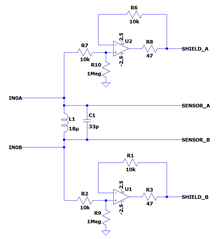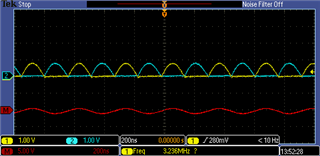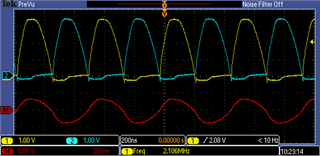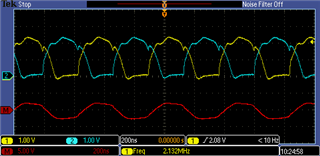Other Parts Discussed in Thread: BUF602
Tool/software:
I'm hoping someone here can shed some light on a problem we are having with our prototype liquid level sensor and active shielding.
With the shield buffer in-circuit, the sensor peak voltage rises to a large-ish value (3 to 4 volts) no matter what drive setting I tell the FDC.
Removing the output of the buffer from the shields, then the levels are fine.
Circuit:

We are using a differential sensor configuration so we are driving both electrodes' shields with buffers from their respective output of the FDC.
Here is the LC tank + sensors signal without buffers activated:

And here it is with the buffers on (no change to drive strength register):

Here are the outputs of the buffers:

Troubleshooting steps we have tried to no avail:
- Replace the 10kΩ's with 10Ω.
- Change the 47Ω to 0 and place 22Ω outside the loop on the output.
- Remove the 1MΩ
- Remove the output of just the B side buffer.
- Cut the B side sensor to try out single ended configuration. A side buffer on.
Other info that might be pertinent:
- The 2.5 volt supplies are LDO's and look clean on the scope.
- The layout is not the best and likely large-ish parasitic capacitance between LC tank and buffers.
- The PCB is all flex, so there is not very much thickness of dielectric between sensor electrode and shields.
Thanks.


